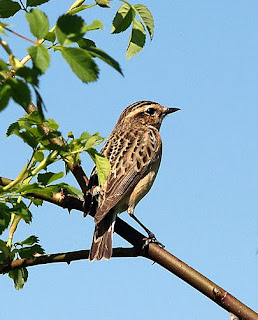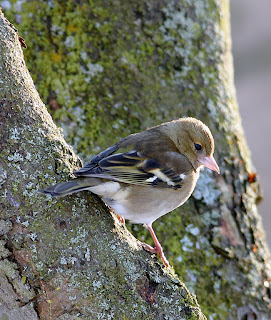The chat in question was a Whinchat, now as scarce in these parts as hen’s teeth. I was watching 3 Wheatears near my traps when a juvenile Whinchat popped up on the fence behind the United Utilities paraphernalia at Pilling Water. It’s now one of those birds that no one passes by anymore but instead stops to take a closer look. Apart from seeing several migrant Whinchats in Menorca in May it was my first Whinchat of the year, and I don’t expect to see many more this year because their population has suffered a dramatic drop in recent years.

I didn’t catch any of the Wheatears but they removed at least one meal worm without getting caught, then hung around for a time watching for more easy pickings, but stayed clear of the now reset spring traps. Birds are definitely cleverer than we humans give them credit for.

Apart from the pleasant Whinchat surprise things were much the same this morning with along the shore 5 Pied Wagtails, 4 Meadow Pipits and 15 Goldfinch but the reappearance of more than 30 Linnets. The wildfowler’s pools held a Green Sandpiper, 2 Greenshank, 1 Snipe and at least 200 Teal with 3 Blackbirds emerging from the maize cover and 2 Collared Doves diving in for a feed.




Along Broadfleet and the outflow I counted 2 Common Sandpipers, 1 Cormorant, 1 Grey Heron and 3 Little Egrets. Feeding along the ditch and adjacent fields were approximately 90 Swallows and 10 House Martin, at one point paying some attention to a spiralling Sparrowhawk that drifted over towards distant Fluke Hall into more hirundine aggro. It was about now that I heard the deep croaking of 2 Ravens as they passed quickly overhead heading south east.


When I got back home staring at the blank sheet of the blog I wondered what on earth I could write as I had seemed to spend an inordinate amount of time watching Wheatears and the Whinchat. But then I looked at my notebook and realised the variety of birds I had actually logged whilst mainly stopping and staring. Maybe that old maxim about letting the birds come to you holds more than a grain of truth and that dashing around in pursuit of birds isn’t nearly as much fun or as rewarding?




























































.jpg)














